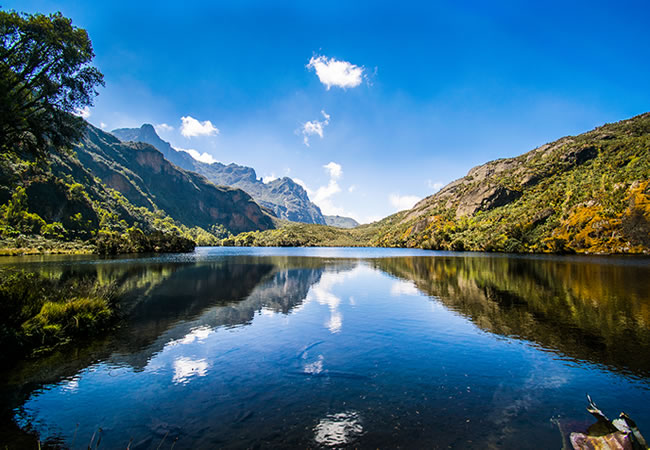Located on the border between Uganda and the Democratic Republic of Congo, the Rwenzori Mountains is home to the roof of the pearl of Africa towering over 5109 meters above sea level. Known as the “Mountains of the Moon,” these majestic peaks rise dramatically above lush green valleys and tropical rainforests, offering adventurers a glimpse into an alpine wonderland unlike any other on the continent.
The Rwenzori Experience
Exploring the Rwenzoris is a journey into a world where mist-shrouded peaks touch the sky and glacier-clad slopes contrast with equatorial flora. The range is crowned by Margherita Peak, the third-highest point in Africa, challenging climbers with its icy slopes and breathtaking vistas.
Biodiversity and Ecology
Beyond its lofty summits, the Rwenzori Mountains National Park harbors a unique ecosystem. From the dense montane forests at lower altitudes to the otherworldly moss-covered landscapes of the Afro-alpine zone, each ecological zone supports a diverse array of flora and fauna found nowhere else on Earth. Rare species like the Rwenzori turaco and the endemic Rwenzori leopard call these slopes home, thriving in the cool, misty environment.
Cultural Richness
The Rwenzori region is also steeped in cultural significance. The Bakonzo people, who inhabit the foothills of the mountains, have developed a deep connection with this majestic landscape over centuries. Their traditions, folklore, and unique way of life add a layer of richness to any exploration of the area.
Trekking and Adventure
Trekking through the Rwenzori Mountains is a challenging yet rewarding endeavor. Well-maintained trails wind through verdant valleys and ancient glacial valleys, offering hikers glimpses of cascading waterfalls and pristine alpine lakes. Experienced guides lead visitors through this remote and often unpredictable terrain, ensuring safety while imparting knowledge about the mountains’ history and natural wonders.
Conservation and Sustainability
Preserving the Rwenzori Mountains is a priority for Uganda’s conservation efforts. Sustainable tourism practices and community involvement play crucial roles in maintaining the delicate balance between exploration and preservation. Initiatives aimed at protecting endangered species and promoting eco-friendly tourism ensure that future generations can continue to marvel at the Rwenzori’s splendor.
Planning Your Expedition
When planning a trip to the Rwenzori Mountains, consider the best time of year to visit, typically during the dry seasons from December to February and June to August. Prepare for variable weather conditions and pack accordingly for the challenging trekking routes.
Exploring the Rwenzori Mountains offers intrepid travelers a chance to immerse themselves in one of Africa’s most stunning and lesser-known regions. Whether scaling its icy peaks, discovering its unique biodiversity, or learning from its resilient communities, the Rwenzoris promise an unforgettable adventure that combines natural beauty with cultural richness in equal measure.
Check out Rwenzori Packages Here


